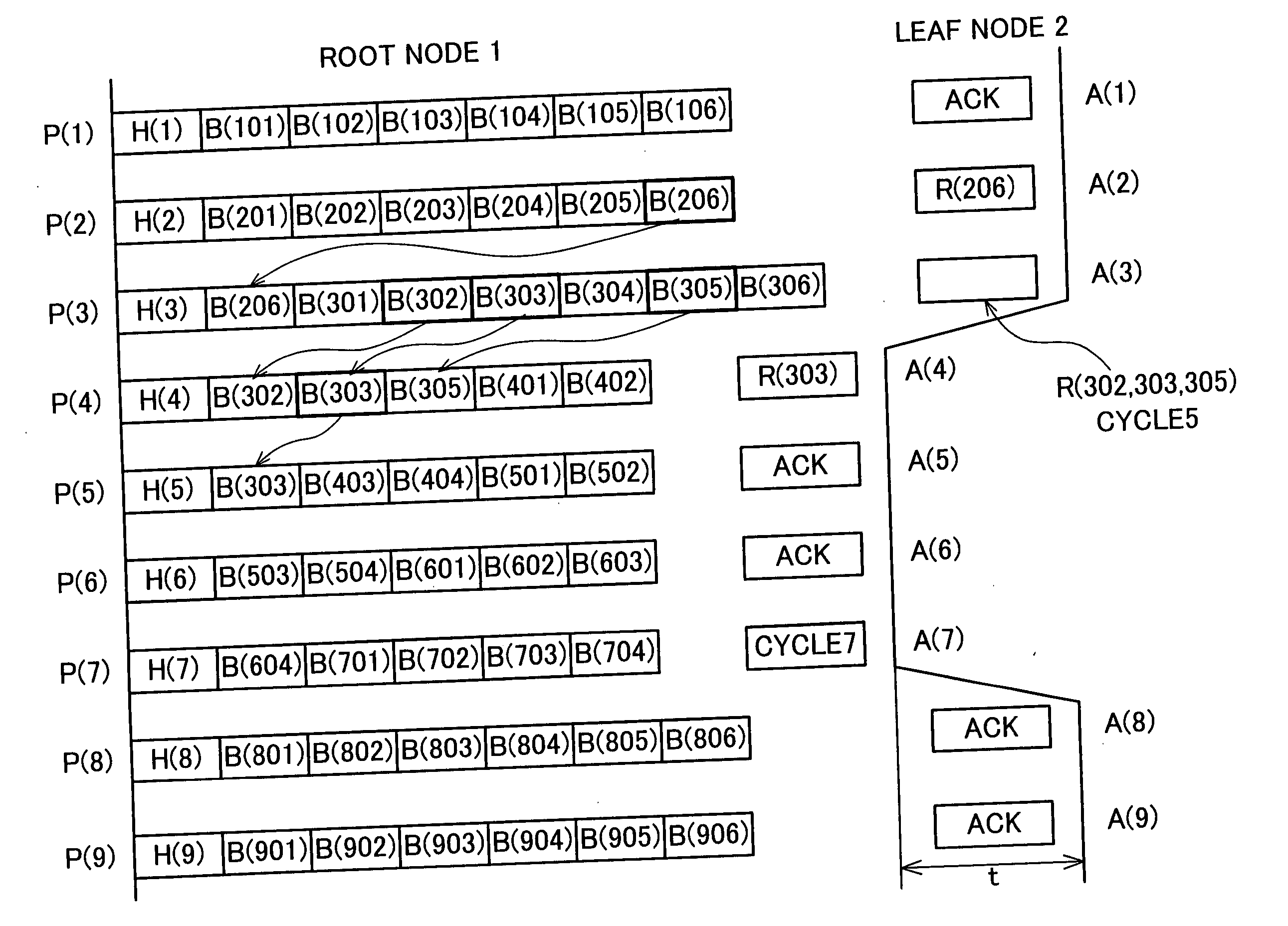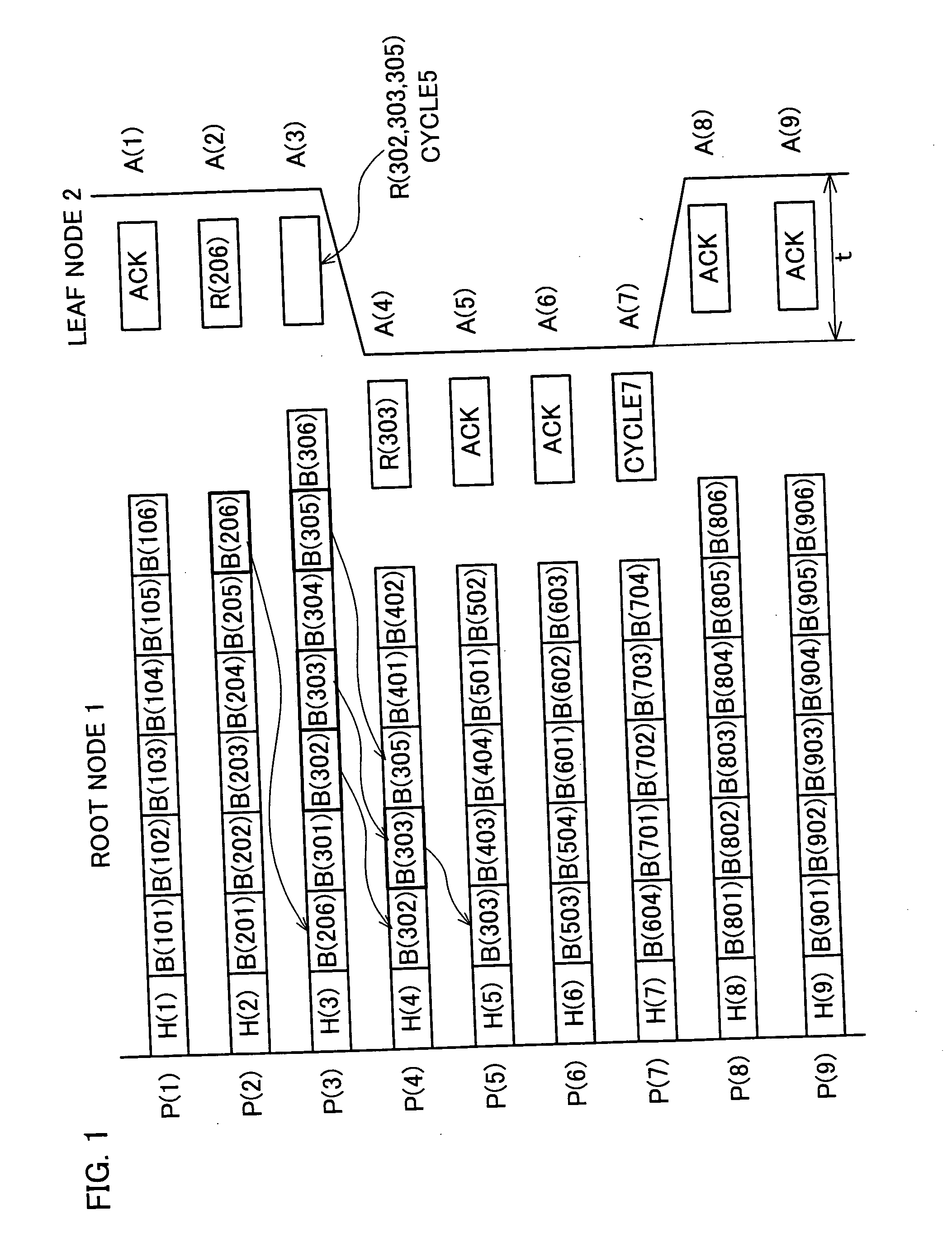Communicating method, transmitting apparatus, receiving apparatus, and communicating system including them
a communication system and transmitting device technology, applied in the field of communication methods, transmitting devices, receiving devices, and communicating systems including them, can solve the problems of increasing circuit scale, high bit error rate, and low use of high correction capability error correction codes to achieve the effect of avoiding block noise, increasing the number of times a data block is retransmitted, and shortening the data packet length
- Summary
- Abstract
- Description
- Claims
- Application Information
AI Technical Summary
Benefits of technology
Problems solved by technology
Method used
Image
Examples
example 2
[0090] As shown in FIG. 2, in the present example, the data packet transmitted from the root node 1 also usually contains a header and six succeeding new data blocks similarly to example 1. However, in the present example, even if the root node 1 transmits a retransmission request packet A(3) containing the retransmission request information R(302, 303, 305) and the block count information CYCLE5 in the third cycle from the leaf node 2, the root node 1 transmits the data packet P(4) containing the data blocks B(302), B(303), B(305) for which a retransmission request should be made, as well as the four data blocks B(401) to B(404) without reducing the cycle period in a next cycle, by means of the data coding section 11.
[0091] In the sixth cycle, since there is no data block to be retransmitted, the data packet P(6) is composed of the four data blocks B(601) to B(604) to be transmitted in this cycle.
[0092] In this manner, increasing the compression ratio for the data block without cha...
embodiment 2
[0096] [Embodiment 2]
[0097] The present embodiment will describe an arrangement where the function of the communications system illustrated in embodiment 1 is partly changed. The present embodiment will refer to the same figures as embodiment 1.
[0098] FIG. 3 is a block diagram showing an arrangement of a communications system according to the present embodiment (the present system). As shown in the figure, the present system includes a root node 1 as a transmitter device and a leaf node 2 as a receiver device.
[0099] The root node 1 and the leaf node 2 are linked by wireless communications (communications by means of, for example, a radio wave or infrared wave).
[0100] In other words, in the present system, the root node 1 divides externally provided new data into multiple blocks (data blocks) to generate a data packet containing a predetermined number of data blocks and transmit them to the leaf nodes 2.
[0101] "New data" means video / audio data provided in real time from, for example,...
PUM
 Login to View More
Login to View More Abstract
Description
Claims
Application Information
 Login to View More
Login to View More - R&D
- Intellectual Property
- Life Sciences
- Materials
- Tech Scout
- Unparalleled Data Quality
- Higher Quality Content
- 60% Fewer Hallucinations
Browse by: Latest US Patents, China's latest patents, Technical Efficacy Thesaurus, Application Domain, Technology Topic, Popular Technical Reports.
© 2025 PatSnap. All rights reserved.Legal|Privacy policy|Modern Slavery Act Transparency Statement|Sitemap|About US| Contact US: help@patsnap.com



